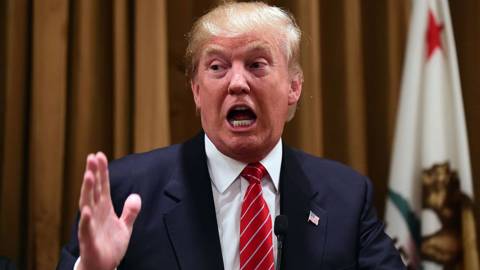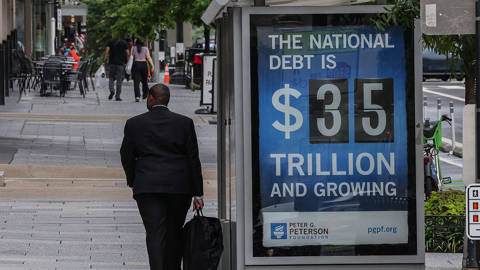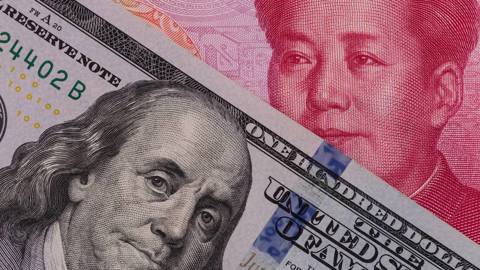When firms and workers pay close attention to inflation, they adjust their own price and wage demands more frequently – a response that can perpetuate inflation across the economy. Given this, reaching central banks’ 2% target is not enough; policymakers need to get the economy to a place where agents forget about inflation altogether.
BRUSSELS/MILAN – Sentiment in financial markets has undergone a sharp reversal in early 2024. After more than a year of aggressive interest-rate hikes by the US Federal Reserve and the European Central Bank, talk has turned to the question of when – not if – central banks will lower rates. After all, inflation in the United States and the eurozone has fallen almost as quickly as it rose, and is now near central banks’ 2% target.
To determine whether inflation has, in fact, been vanquished, we must first understand why it increased in the first place. The explanation might seem obvious. Everybody “knows” that inflation surged in 2022-23 due to external factors, especially supply-chain disruptions and energy-price increases caused largely by the COVID-19 pandemic and the Ukraine war. But even a cursory glance at the data reveals flaws in this explanation.
The energy and supply shocks to which inflation is often attributed were short-lived. Crude-oil prices fell back to pre-Ukraine war levels after just a few months, and the supply shortages that characterized the immediate post-pandemic era disappeared over the course of 2023. If these shocks were all that was going on, prices would have increased sharply, then quickly declined, with negative inflation rates taking hold.
But that is not what happened. While prices for energy and some of the goods that were in short supply in 2022 have fallen, most other prices have continued to increase. Notably, the twin shocks should barely have affected the prices of services because services require mostly labor inputs and thus depend primarily on wages, not energy prices. And yet, services prices have been rising steadily.
When energy prices increase, central bankers face a conundrum. The consumer price index can remain stable only if other prices – mostly for services – fall. But there is a consensus among economists and central bankers that lowering wages is very difficult. This downward wage rigidity underpins the argument that central banks should not be held accountable for inflation caused by rising energy prices.
Recent developments challenge this logic. In the years preceding the COVID-19 pandemic, services prices increased by about 2-3% per year in the US, but the prices of durable goods, on average, fell a little each year, resulting in an average inflation rate of around 2.5%. This combination of stable-but-moderate services inflation and slightly falling goods prices persisted through multiple oil-price spikes, such as in 2008 and 2013. It is thus unlikely that the recent surge in the prices of services – which rose by 7% in 2022-23 – was driven simply by an oil-price shock.
To be sure, energy prices might explain a large share of overall inflation in the eurozone. Natural-gas prices in Europe soared in 2022. Though they have since fallen, they remain more than twice their level a year before the Ukraine war. This raises costs not only for heating, but also for many industrial processes, food production, and services like accommodation.
So, the energy-price shock probably had a stronger and longer-lasting effect on the prices of many components of the consumption basket, especially food and some services, in Europe. Nonetheless, energy prices have declined – and services prices have not fallen with them. Less than a quarter of the eurozone’s six-percentage-point “disinflation” over the last year is due to services. Meanwhile, in the US, services inflation is running at roughly 5%.
The question, then, is why energy and goods prices have followed the traditional trajectory – first up, then down – but the services sector has remained plagued by inflationary pressures. One convincing explanation lies in what economists call rational inattention: when inflation is low, and has been stable for a long time, rational agents do not feel they have to think much about prices. As a result, wages and the prices of goods other than energy might remain steady, even as energy prices fluctuate modestly – as was the case until 2019.
This equilibrium breaks down when the price of energy or some other critical input increases sharply. The surge in energy prices in 2022 – together with the major geopolitical event that triggered it – made people pay attention. When some highly visible prices, such as those of used cars, shot up by almost 50% in a matter of few months, owing to a combination of surging post-pandemic demand and supply-chain disruptions, inflation moved to the forefront of economic agents’ minds.
When firms and workers pay close attention to inflation, they adjust their own price and wage demands more frequently. This explains why inflation spread from energy and cars to the entire economy. Central banks, especially the ECB, were slow in 2022 to recognize this regime shift and that they could no longer rely on the benign experience of the last decade when other major shifts in oil prices had a limited impact on inflation.
Simply reaching the 2% target for a few months will not be sufficient to achieve what central banks should really be aiming for: an economy in which workers and producers forget about inflation.
So, the challenge central bankers face is not so much bringing inflation from 3% to 2% – the “last mile” of the disinflation race – but keeping it there for so long that people stop worrying that prices will rise again tomorrow. Far from being the finish line, the 2% target marks the start of a new marathon.










BRUSSELS/MILAN – Sentiment in financial markets has undergone a sharp reversal in early 2024. After more than a year of aggressive interest-rate hikes by the US Federal Reserve and the European Central Bank, talk has turned to the question of when – not if – central banks will lower rates. After all, inflation in the United States and the eurozone has fallen almost as quickly as it rose, and is now near central banks’ 2% target.
To determine whether inflation has, in fact, been vanquished, we must first understand why it increased in the first place. The explanation might seem obvious. Everybody “knows” that inflation surged in 2022-23 due to external factors, especially supply-chain disruptions and energy-price increases caused largely by the COVID-19 pandemic and the Ukraine war. But even a cursory glance at the data reveals flaws in this explanation.
The energy and supply shocks to which inflation is often attributed were short-lived. Crude-oil prices fell back to pre-Ukraine war levels after just a few months, and the supply shortages that characterized the immediate post-pandemic era disappeared over the course of 2023. If these shocks were all that was going on, prices would have increased sharply, then quickly declined, with negative inflation rates taking hold.
But that is not what happened. While prices for energy and some of the goods that were in short supply in 2022 have fallen, most other prices have continued to increase. Notably, the twin shocks should barely have affected the prices of services because services require mostly labor inputs and thus depend primarily on wages, not energy prices. And yet, services prices have been rising steadily.
When energy prices increase, central bankers face a conundrum. The consumer price index can remain stable only if other prices – mostly for services – fall. But there is a consensus among economists and central bankers that lowering wages is very difficult. This downward wage rigidity underpins the argument that central banks should not be held accountable for inflation caused by rising energy prices.
Recent developments challenge this logic. In the years preceding the COVID-19 pandemic, services prices increased by about 2-3% per year in the US, but the prices of durable goods, on average, fell a little each year, resulting in an average inflation rate of around 2.5%. This combination of stable-but-moderate services inflation and slightly falling goods prices persisted through multiple oil-price spikes, such as in 2008 and 2013. It is thus unlikely that the recent surge in the prices of services – which rose by 7% in 2022-23 – was driven simply by an oil-price shock.
BLACK FRIDAY SALE: Subscribe for as little as $34.99
Subscribe now to gain access to insights and analyses from the world’s leading thinkers – starting at just $34.99 for your first year.
Subscribe Now
To be sure, energy prices might explain a large share of overall inflation in the eurozone. Natural-gas prices in Europe soared in 2022. Though they have since fallen, they remain more than twice their level a year before the Ukraine war. This raises costs not only for heating, but also for many industrial processes, food production, and services like accommodation.
So, the energy-price shock probably had a stronger and longer-lasting effect on the prices of many components of the consumption basket, especially food and some services, in Europe. Nonetheless, energy prices have declined – and services prices have not fallen with them. Less than a quarter of the eurozone’s six-percentage-point “disinflation” over the last year is due to services. Meanwhile, in the US, services inflation is running at roughly 5%.
The question, then, is why energy and goods prices have followed the traditional trajectory – first up, then down – but the services sector has remained plagued by inflationary pressures. One convincing explanation lies in what economists call rational inattention: when inflation is low, and has been stable for a long time, rational agents do not feel they have to think much about prices. As a result, wages and the prices of goods other than energy might remain steady, even as energy prices fluctuate modestly – as was the case until 2019.
This equilibrium breaks down when the price of energy or some other critical input increases sharply. The surge in energy prices in 2022 – together with the major geopolitical event that triggered it – made people pay attention. When some highly visible prices, such as those of used cars, shot up by almost 50% in a matter of few months, owing to a combination of surging post-pandemic demand and supply-chain disruptions, inflation moved to the forefront of economic agents’ minds.
When firms and workers pay close attention to inflation, they adjust their own price and wage demands more frequently. This explains why inflation spread from energy and cars to the entire economy. Central banks, especially the ECB, were slow in 2022 to recognize this regime shift and that they could no longer rely on the benign experience of the last decade when other major shifts in oil prices had a limited impact on inflation.
Simply reaching the 2% target for a few months will not be sufficient to achieve what central banks should really be aiming for: an economy in which workers and producers forget about inflation.
So, the challenge central bankers face is not so much bringing inflation from 3% to 2% – the “last mile” of the disinflation race – but keeping it there for so long that people stop worrying that prices will rise again tomorrow. Far from being the finish line, the 2% target marks the start of a new marathon.